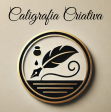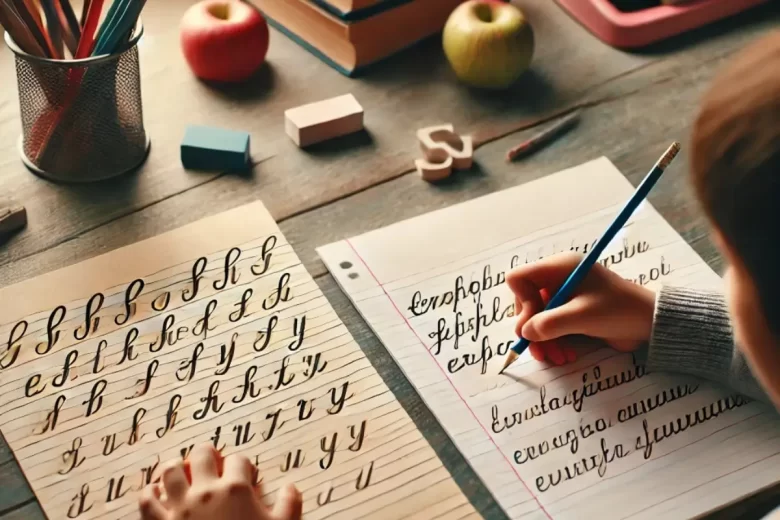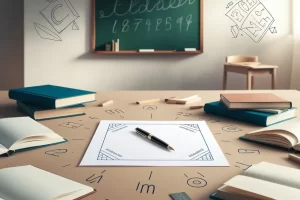Did you know that the way a child writes can directly influence their cognitive development? Handwriting, often seen as merely an academic skill, plays a crucial role in enhancing fine motor skills, organizing thoughts, and even improving memory.
Among the most discussed handwriting styles, cursive and print writing raise many questions: which is more effective for children’s learning? While cursive is seen as a tool that promotes fluidity and agility, print is considered clearer and simpler, especially during the early learning stages.
The question arises: which style provides the best support for cognitive and motor development in children? Let’s explore these two forms of writing and determine which one stands out in shaping essential skills for the future.
2. Writing as a Tool for Expression and Creativity
Writing is a powerful tool for children’s expression and creativity. As they learn to write, they not only develop a technical skill but also improve their ability to organize and communicate thoughts and emotions uniquely. The way they write—whether in cursive or print—can directly influence how they connect with their ideas.
Cursive Writing – Fluidity and Individual Style
- Creative freedom: Cursive handwriting allows for a continuous movement of the hand, which can encourage children to write more fluidly and personally.
- Unique expression: Each child develops their own style in cursive writing, fostering a deeper connection with the act of writing and their own identity.
- Confidence: Writing in a more natural flow helps children feel comfortable discovering their creativity and experimenting with different ways to express their thoughts.
Print Writing – Clarity and Structured Thinking
- Clear organization: With well-defined letters, print writing helps children understand the importance of structure and organization in writing.
- Ease of recognition: This style facilitates early learning, as isolated letters are easier to identify, supporting reading and writing skills.
- Foundation for complex ideas: Print writing provides a solid base for children to express their thoughts clearly and logically.
How Each Handwriting Style Influences Creativity
Cursive writing encourages creative freedom, helping children develop a personal style.
Print writing promotes clarity and structured thinking, providing a more organized foundation for learning.
Both styles play an essential role in fostering expression and creativity. Cursive supports fluency, while print ensures clarity. The key is to balance both styles throughout the learning process, allowing each to contribute to the child’s full development.
3. Cursive Writing: Benefits for Writing and Thinking
Cursive writing is more than just a stylized form of writing; it offers unique benefits for children’s cognitive and motor development. Its fluidity and agility make writing faster and more efficient while also providing advantages beyond simply forming letters.
Ease of Fluency and Speed in Writing
- Continuous movement: The uninterrupted flow of strokes in cursive allows children to write more quickly without frequent pauses. This is particularly useful for activities that require speed, such as note-taking or following a lesson.
- Improved motor coordination: The continuous hand movement in cursive writing helps enhance fine motor skills, which are essential for both academic and daily activities.
Stimulation of Memory and Concentration
- Muscle memory: The repetitive act of writing in cursive activates muscle memory, helping children remember letter shapes and movements more effectively.
- Focused concentration: The need to maintain fluency while writing in cursive improves concentration, engaging children more deeply in the writing process.
Cognitive Benefits of Cursive Writing
- Greater brain engagement: Studies show that cursive writing activates different areas of the brain, promoting stronger integration between motor and cognitive functions. This brain engagement benefits critical thinking and problem-solving skills.
- Development of executive functions: Cursive writing requires planning and motor control, improving executive skills such as organization, impulse control, and decision-making.
Examples of Activities to Improve Cursive Writing
- Tracing exercises: Beginning with simple tracing activities helps children practice essential writing movements.
- Writing words and sentences: Encouraging children to write words and sentences in cursive, starting with simple words and gradually advancing to more complex sentences.
- Creative challenges: Engaging in cursive writing games, such as writing a story or letter using only cursive, promotes both practice and creativity.
Cursive writing offers unique benefits, from improving fluency to enhancing concentration and memory. Incorporating these practices into daily learning helps children not only refine their writing but also develop valuable cognitive and motor skills.
4. Print Writing: Clarity and Structure in Writing
Print writing is often the first approach in teaching handwriting due to its visual clarity and ease of recognition. Its straight and well-defined lines make reading more accessible, providing a strong foundation for writing and reading development. This style plays a crucial role in forming essential skills for both early learners and children facing writing difficulties.
The Visual Clarity of Print Writing and Its Effect on Readability
- Ease of reading: Print writing is simpler and more structured, making letter identification easier, especially for children beginning to learn to read and write. Clearly defined shapes make each letter distinct and recognizable.
- Enhanced legibility: When used for writing clearly, print handwriting ensures words are easily understood, which is crucial for early learning and strengthening reading skills.
Print Writing as a Foundation for Early Literacy
- Structured learning: Print writing is ideal for teaching children about word structure, helping them better understand letter and syllable formation. It serves as a fundamental step before progressing to more complex handwriting forms, such as cursive.
- Easier letter assimilation: Due to its straightforward nature, print writing makes learning new words more accessible and less confusing for children in their first writing experiences.
How Print Writing Benefits Children with Reading and Writing Difficulties
- Greater clarity in learning: For children with reading and writing difficulties, print handwriting may be more effective because the letters are easier to distinguish and remember, aiding word recognition.
- Building confidence: Writing clearly and legibly helps children feel more confident, as their words and thoughts are easily understood, encouraging continuous progress.
Examples of Activities to Improve Print Writing
- Tracing and repetition exercises: Starting with letter and word tracing activities helps children reinforce letter formation and improve handwriting.
- Dictation and copying: Dictation and copying exercises help reinforce learning and practice clear, structured writing.
- Letter recognition games: Using flashcards or games that encourage letter recognition and print writing strengthens visual memory and writing accuracy.
Print writing is an essential tool for early literacy development, offering clarity and structure in the learning process. Its effect on legibility and foundational writing skills makes it a valuable choice, particularly for children beginning to explore the world of writing. Using specific activities can enhance this skill, fostering more effective and confident learning.
Final Considerations
Throughout this article, we have explored the advantages and characteristics of both cursive and print writing, two essential handwriting styles in child development. Cursive writing, with its fluidity and cognitive benefits, enhances memory, concentration, and fine motor coordination. Print writing, with its visual clarity and structured format, facilitates reading and serves as an ideal foundation for early literacy.
Each handwriting style plays a role in the literacy process and overall child development. While cursive strengthens mental and motor agility and encourages individual expression, print writing provides a solid foundation for accessible and legible reading and writing, which is crucial for early education.
However, there is no definitive answer as to which is “better,” as each child’s needs vary. Cursive may be more challenging initially, while print is simpler and more direct. Recognizing that both styles have limitations and benefits, when used in a balanced manner, can lead to a more comprehensive learning experience.
The best approach may be to integrate both styles into the learning process, leveraging the advantages of each at different stages. Beginning with print handwriting offers a solid foundation, while gradually introducing cursive allows children to benefit from its cognitive and motor advantages. By fostering proficiency in both, educators and parents can equip children with a diverse skill set, preparing them for future academic and creative challenges.




